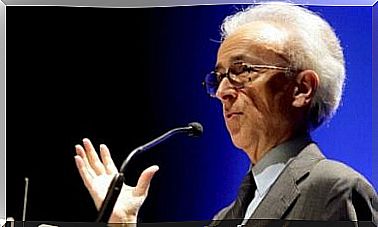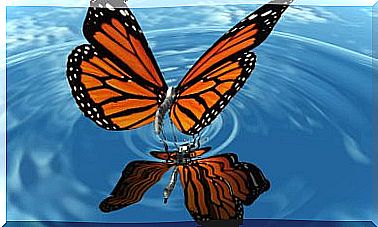The Poisoned Arrow, A Buddhist Theory That Will Confront You With Your Self

One of the great demands of Buddha is to live in the present moment. This is why in his teachings we can recognize some of the principles that have given rise to Minduflness today . But if we look at Buddhist parables, like the poison arrow, we find that we haven’t made much headway since that great thinker.
One of Buddha’s famous phrases says, “Don’t dwell on the past, don’t dream of the future, focus your mind on the present moment.” So, it seems appropriate to emphasize this aspect of Buddhism, with the story of the poison arrow.
The poison arrow
In a collection of texts formed by the Pali Canon, which are attributed to Buddha and whose name is Majjhima Nikaya, we find different stories, including that of the poisoned arrow. Apparently, Buddha told it to one of his most impatient students. The youngster wanted answers to his questions about life after death.

So he told her that one day a man was injured by a poisoned arrow. And when his relatives tried to seek a doctor, the man refused to seek treatment.
The injured said that before any doctor tried to help him, he wanted to know who had attacked him, what caste he belonged to and where he came from. He also wanted to know his size, his strength, the color of his skin, the type of bow with which he had drawn and if his rope was made of hemp, silk or bamboo.
So while he continued to want to know if the feathers of his arrow were vulture, peacock, or hawk, and whether the bow was common, curved, or bay blossom, he died before he knew the answer to none of his questions.
“
-Buddha-
What does the story of the poison arrow try to tell us?
The attitude of this man in the face of death seems rather absurd. No ? But if we take this to the extreme in real life situations, aren’t there situations where we behave like this wounded warrior?
Maybe subconsciously, but sometimes we focus too much on issues that are really unimportant for fear of facing the ones that are. The heart of the matter remains unknown, as we delve into very unimportant topics at this time.
So, with this story, Buddha tries to show his pupil that intelligence, when it comes to distinguishing the important from the essential, can make the difference between overcoming a difficulty and letting yourself be overcome by it.
Focus your attention on what is really valid
This does not mean that wandering cannot be beneficial. The problem arises when this rambling happens consistently without concrete goals. That is to say, when it comes to solving a problem, it is sometimes better to go straight to the point, leaving the sidelines to others. Otherwise, the problem may get bigger.
Take it step by step
In some peoples, we say: “Olive eaten, stone thrown away.” This simple saying tells us that once one problem is solved, focus on the next one. There is also the following proverb: “Whoever embraces too much badly embraces”.
Let the world unfold
Too often we allow subjects to influence and harass us in our heads. But, maybe it’s best to let it unfold. Perhaps this will prevent your brain from filling up with worry, anger, sadness or frustration.

Eliminate the unnecessary
Let us return to popular sayings, which are often very wise and worth listening to. “He who has more is not richer, but he who needs less”. We sometimes think that in order to be happy we have to get what we lack. Yet, when you get used to living with the basic and dig deeper into that knowledge, you find that you don’t miss much. The love of a loved one is much more valid than any unnecessary, excessive, or expensive possession.
“Don’t be friends with idiots.”
-Buddha-
Leonardo da Vinci once said that “Simplicity is maximum satisfaction”. The parable of the poisoned arrow of Buddha revolves around the same idea. Two brilliant minds. Nothing more to add, right?
Also read:









